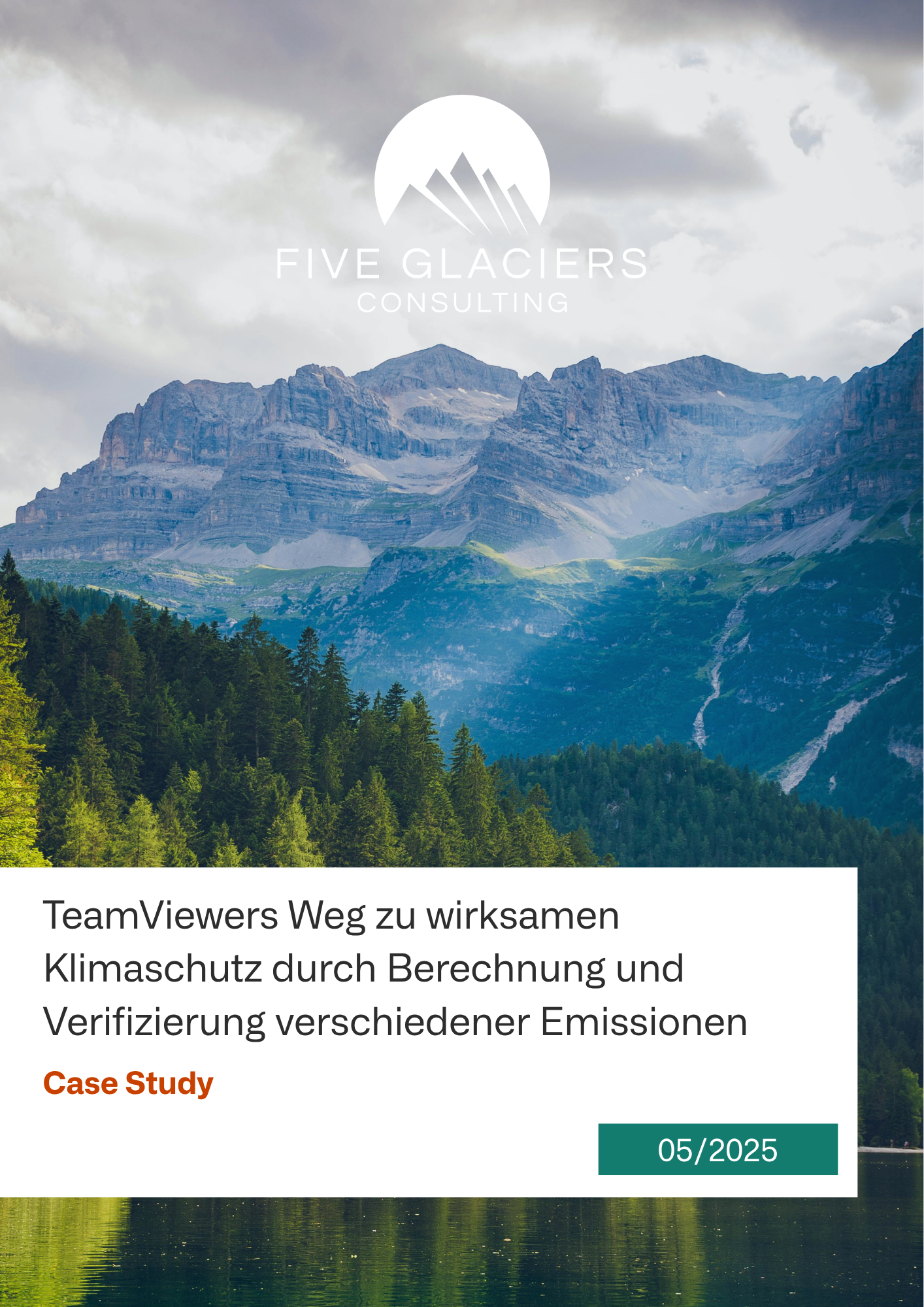
More and more companies are setting themselves climate targets as a guide for future business decisions and also as an incentive for their own actions and business activities. The targets are often embedded in a transformation plan (Bafa Module 5) or CSRD reporting; reducing emissions and setting net zero targets are key components.
Five Glaciers Consulting supports companies in formulating science-based climate targets. Depending on your needs, we use internationally recognized frameworks such as the Science Based Target Initiative (SBTi) and ensure that your targets are as ambitious as they are achievable - and that they contribute to the Paris Agreement and thus to limiting global warming to a maximum of 1.5°.
More and more companies are asking themselves how they can achieve their own climate protection targets in line with the Paris Agreement. International standards such as the SBTi or ESRS offer a helpful framework for this, but of course they come with complexities.
We create a roadmap for your company to achieve the long-term net zero target. Companies that publish their climate targets make a public commitment and automatically draw more attention and responsibility to the target. This releases internal motivation and has external appeal!

Defining ambitious climate targets can unleash amazing energy in companies: Simply submitting them to the SBTi will motivate employees and convince customers. This high-profile commitment is therefore an effective lever for social responsibility and a concrete sustainability roadmap in organizations. With the support of Five Glaciers, set high goals that you can steer towards step by step - supported by other of our service modules.

Create trust through even more transparency - with carbon footprints at product level
learn more


Record your corporate emissions - with our Corporate Carbon Footprint Service
learn more


Optimize your products throughout their life cycle - we accompany the evaluation of your environmental impact
learn more


Erfahren Sie, wie Unternehmen mit uns durch eine auditierbare Berechnungsmethodik ihre Scope-3-Bilanzierung signifikant verbessern können.
Präzisere Treibhausgasbilanzierung durch zulieferspezifische Emissionsintensitäten: TeamViewers Ansatz für Scope 3
Climate risks can be divided into physical risks, such as extreme weather events, and transitory risks (transition risks), such as CO₂ pricing or changing market requirements. Companies that assess their climate risks can better protect themselves against future financial and operational uncertainties. In addition, climate-related risk analyses are increasingly being demanded by investors and regulatory authorities.
The EU taxonomy defines which economic activities are considered sustainable and promotes investment in climate-resilient companies. Companies must prove that they make significant contributions to climate protection and do not cause significant environmental damage. The taxonomy therefore has a significant influence on the availability of capital for companies with high climate risks.
ESRS E1 requires companies to identify physical and transitory climate risks and analyze their financial impact. Companies must also explain what measures they are taking to minimize risks. The results are included in the non-financial reporting of the CSRD and influence investment decisions.
Companies should evaluate their business strategy on the basis of different climate scenarios in order to identify potential risks and opportunities at an early stage. A 1.5°C scenario, for example, shows how stricter CO₂ regulations will affect business models, while a 4°C scenario focuses on extreme physical climate risks. Such analyses help with long-term strategic planning and investment decisions.
Companies can minimize climate risks by investing in climate-resilient infrastructure, sustainable supply chains and low-carbon technologies. They should also integrate measures to adapt to changing regulatory requirements into their corporate strategy at an early stage. Close collaboration with stakeholders helps to identify future risks at an early stage and develop countermeasures.


Let's talk about climate! We look forward to getting to know you.
Phone: +49 174 1305766
E-mail: info@fiveglaciers.com
Direct appointment booking
